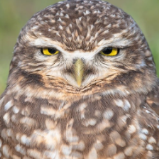Enter the World of the Nora Dance Drama
-
Recently Browsing 0 members
- No registered users viewing this page.
-
Topics
-
-
Popular Contributors
-
-
Latest posts...
-
19
BREAKING NEWS Kremlin Confirms Trump-Putin Agreement to Meet in 'Coming Days'
And Donnie is still not getting a Nobel prize. Traitors do not qualify. -
28
What Putin Really Wants from His Upcoming Meeting with Trump
Having an extensive knowledge of foreign policy details is not needed for what he is doing. Do you think John Kerry was such a great foreign policy expert, or even Hilary Clinton? They were capable, but not educated, nor specialized in the subject matter. Like Witcoff, they are relying on specialists to do the details and to provide briefing reports. He has a large number of people working for him and who would work on the details of any agreement. However, when it comes to getting someone to agree to something in principle, what one needs is personality, presence and negotiating skill. A good real estate lawyer is briefed on the key issues, and which ones are non negotiable or have room to move. It is no different than when he was negotiating the labor contracts for the employees l who worked on his real estate, or in negotiating with municipal, county and state bureaucrats to get a development agreed to and then addressing local concerns. Got it now? When I work on a contract, my company lawyers are actively involved in the negotiations. I provide my specialist input, as do my colleagues, and then our legal team assembles this into its legal brief and goes to work. This is how the real world works. If you think Witkoff is sitting there making a deal on his own, you are wrong. -
34
Dr. Phil vs Two Lefty's, Maher & Steven A.- ICE Raids...
Thanks ! I have no desire to nurse the illusion of they/them becoming a centrist or supporting lefty's of the party that once was the party of a centrist (the JFK dem party) . Cultural Marxist/Socialist have taken over that party and reformed it to fit their radical agenda. -
51
UK UK-French Migrant Deal Sparks Detentions and Controversy
Oh. Does this mean that those currently detained ready to be returned to France could return on a different rubber boat in the coming weeks? -
1
Crime Russian Drunk Driver Nearly Hits Pattaya Rescue Station
Off to the front line for him 😡 -
-
-
Popular in The Pub

.thumb.jpg.3ee24d9400fb02605ea21bc13b1bf901.jpg)








Recommended Posts
Create an account or sign in to comment
You need to be a member in order to leave a comment
Create an account
Sign up for a new account in our community. It's easy!
Register a new accountSign in
Already have an account? Sign in here.
Sign In Now